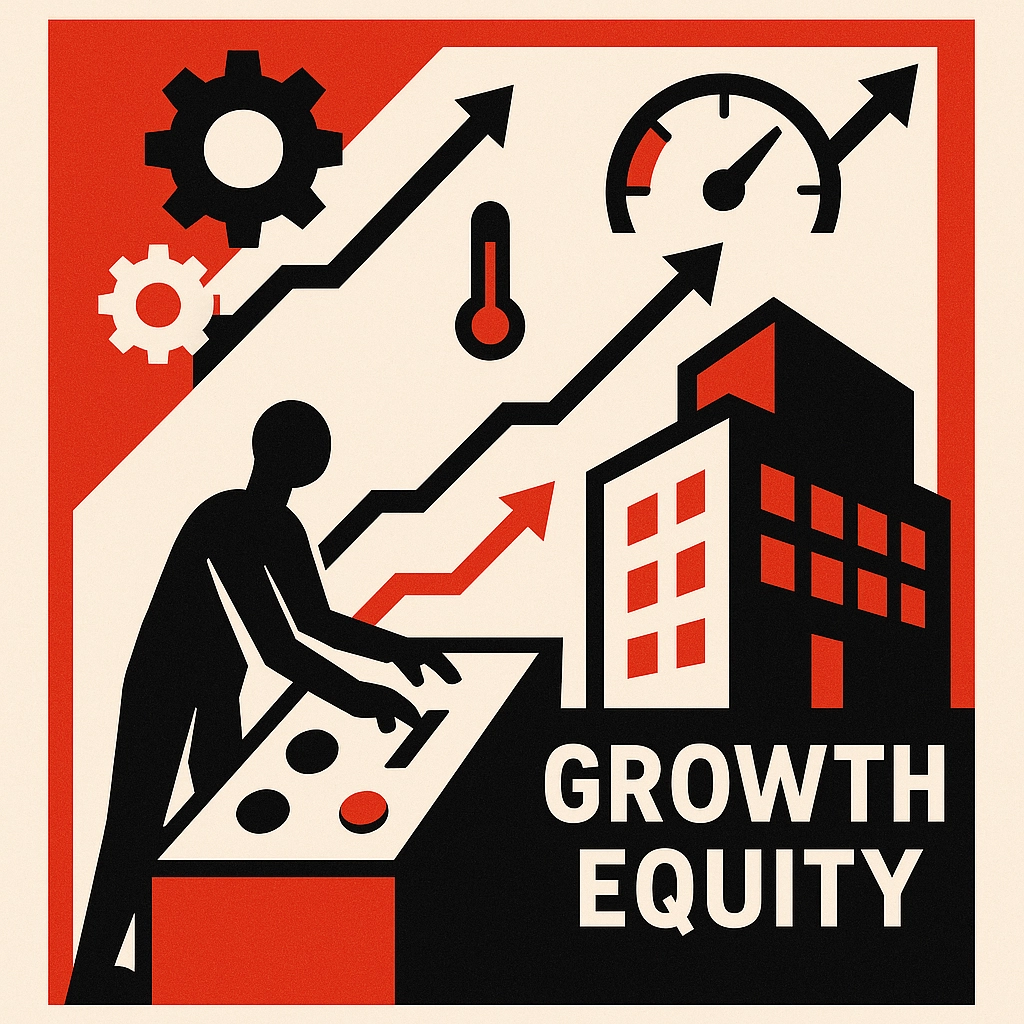Beyond the Check: How Growth Equity Firms Are Accelerating Innovation in 2025
The venture capital ecosystem is finding its footing again. After the exuberance of 2021 when global VC funding hit a dizzying $681 billion, followed by the sobering correction of 2022-2023, we’re witnessing what analysts are calling a “recovery by degrees.” Global venture funding reached $248 billion in 2024—a 23% increase from 2023’s $201 billion, signaling cautious optimism while remaining well below peak levels.
But something more interesting is happening beneath these headline numbers. Growth equity firms aren’t just writing checks anymore—they’re fundamentally reimagining how they accelerate innovation and create value. At Lever Venture, we’ve had a front-row seat to this transformation, and it’s reshaping how the best firms operate.
The New Growth Equity Playbook
Remember when having deep pockets and a Rolodex of connections was enough? Those days are firmly in the rearview mirror. Today’s growth equity landscape demands a far more sophisticated approach.
“Capital is a commodity. What isn’t a commodity is knowing how to build enduring companies,” noted one prominent VC leader at a recent industry conference. This sentiment captures the essence of the shift we’re witnessing.
The most effective growth equity firms in 2025 are combining capital with comprehensive operational expertise, sector-specific knowledge, and data-driven insights that genuinely move the needle for portfolio companies.

Margin Over Madness: The Efficiency Revolution
Perhaps the most profound shift in growth equity’s approach to innovation acceleration has been the emphasis on sustainable economics. The venture capital approach to software investing underwent a fundamental transformation in 2024, with margin improvement becoming a critical focus alongside revenue growth.
This isn’t just talk—it’s showing up in the numbers. The median EBITDA margin target for venture-backed SaaS companies at Series C and beyond increased from -25% in 2021 to -10% in 2024, with an expectation of reaching breakeven within 18-24 months of their latest funding.
Several factors drove this increased emphasis on margins:
Higher Cost of Capital: Rising interest rates fundamentally changed the valuation calculus for software companies, with cash flows in the near and medium term becoming more valuable relative to distant growth.
Public Market Signals: Public SaaS companies with strong margins commanded significantly higher multiples (10-12x revenue) than high-growth but unprofitable companies (5-7x revenue).
Exit Environment: Both strategic acquirers and public markets prioritized sustainable unit economics and clear paths to profitability over pure growth stories.
Cash Runway Management: With fundraising challenging and unpredictable, extending cash runway through improved margins became a survival strategy for many companies.
Leading growth equity firms have identified several key levers for margin improvement in their portfolio companies:
- Go-to-Market Optimization: Increased focus on sales efficiency metrics, particularly CAC payback periods
- Product Development Efficiency: More rigorous prioritization frameworks for feature development
- Pricing and Packaging Optimization: More sophisticated value-based pricing models
- Operational Streamlining: Strategic use of global talent and implementation of AI tools to automate workflow
The days of “growth at all costs” are decidedly over. As one prominent growth investor recently put it: “We’ve moved from ‘How fast can you grow?’ to ‘How efficiently can you grow?'”
AI: Both Investment Target and Strategic Weapon
If there’s one technology reshaping both what growth equity firms invest in and how they operate, it’s artificial intelligence.
AI dominated venture investing in 2024, with companies in the space raising approximately $115 billion globally, accounting for 46% of all venture dollars. However, the investment focus shifted from foundation models to vertical applications and infrastructure. Notable deals included Anthropic’s $750 million round, Cohere’s $450 million financing, and Hugging Face’s $400 million raise.
Within AI, development tools saw the greatest quarterly growth in Q4 2024, reflecting the market’s transition from infrastructure to application development. Enterprise applications focused on specific verticals like healthcare, financial services, and legal also gained traction.

But beyond being an investment category, AI has rapidly transformed how growth equity firms themselves operate, creating competitive advantages for early adopters. Leading VC firms implemented AI-powered sourcing and screening tools that:
- Analyze thousands of startups daily across news articles, social media, and proprietary databases
- Identify emerging trends before they become obvious by detecting subtle patterns across datasets
- Score companies on proprietary frameworks to prioritize outreach
- Personalize and automate initial engagement with founders
Benchmark Capital reported a 35% increase in proprietary deal flow after implementing its AI sourcing platform, while Sequoia’s internal AI system processes approximately 2,500 companies daily, flagging roughly 50 for further human review.
As one leading GP noted: “AI won’t replace venture capitalists, but venture capitalists who effectively use AI will replace those who don’t.”
Climate Tech: The Other Innovation Frontier
While AI grabs most headlines, climate tech maintained strong momentum in 2024, with total investment reaching $70 billion globally. Key subsectors included:
- Clean energy generation and storage: $25 billion
- Mobility and transportation: $18 billion
- Carbon removal and management: $9 billion
- Climate fintech: $7 billion
- Sustainable agriculture: $6 billion
The sector’s resilience reflects long-term commitments from specialized climate funds like Breakthrough Energy Ventures, General Atlantic’s BeyondNetZero, and TPG Rise Climate, as well as increasing corporate strategic investment.
Growth equity firms are uniquely positioned to accelerate climate innovation given the capital intensity and scale-up challenges that many climate tech companies face. By providing not just funding but regulatory expertise, supply chain optimization, and strategic partnerships, growth investors are helping climate innovators cross the infamous “valley of death” between promising technology and commercial-scale deployment.
The Value Creation Toolbox Expands
Growth equity firms are increasingly developing explicit value creation plans with their portfolio companies:
- Specific margin improvement targets tied to funding milestones
- Detailed roadmaps for operational enhancements
- Regular board-level reviews of efficiency metrics
- Incentive alignment through executive compensation structures
- Milestone-based release of growth capital
Bessemer Venture Partners reported implementing formal margin improvement plans for 78% of their growth-stage portfolio companies in 2024, compared to just 25% in 2021.
The most sophisticated firms are building dedicated operational teams with specialized expertise. Andreessen Horowitz’s operating teams now include experts in everything from regulatory affairs to go-to-market strategy. Insight Partners expanded their software operational due diligence team by 40% to provide deeper analysis of margin improvement opportunities before investment.

The Strategic Imperative: From Opportunistic to Intentional
The venture capital industry has reached an inflection point that requires a fundamental reimagining of strategy and operations. After decades of relatively consistent approaches to investing, portfolio management, and fund operations, structural changes in the market necessitate a more disciplined and forward-looking strategic approach.
Several structural shifts have transformed the venture landscape, making strategic clarity more essential than ever:
Market Maturation: The venture capital industry has grown from approximately $50 billion in annual investments in 2000 to over $250 billion in 2024, creating more intense competition and specialization.
Elongated Company Lifecycles: The average time from founding to exit has extended from 5-6 years in the early 2000s to 8-10 years today, requiring longer fund lifecycles and different support models.
Capital Intensity: Building category-leading companies increasingly requires significant capital across multiple rounds, driving the rise of multi-stage strategies and platform expansions.
Professionalization: The industry has evolved from relationship-driven investing toward more systematic approaches incorporating data science, sector specialization, and operational expertise.
Looking Ahead: The Future of Growth Equity
As we navigate through 2025, several trends will likely shape how growth equity firms continue to accelerate innovation:
The venture industry will continue to bifurcate between large platform firms with comprehensive capabilities and specialized boutiques with distinctive expertise.
Geographic expansion will accelerate, with more firms developing global platforms while maintaining local specialization.
Alternative fund structures beyond the traditional 10-year model will proliferate to address the extended company building timeframes.
Firms will increasingly compete on operational capabilities and sector expertise rather than access to capital alone.
Data-driven approaches to portfolio management and decision-making will become standard, though with varying degrees of integration with human judgment.
The firms that thrive will combine clear strategic direction with adaptability, allowing them to maintain distinctive positions while navigating rapidly evolving markets.
Conclusion: Beyond the Check
The most innovative growth equity firms have moved far beyond their traditional role as mere capital providers. They’ve become company-building partners, bringing specialized expertise, operational resources, and strategic guidance that dramatically accelerates innovation and value creation.
At Lever Venture, we’re embracing this evolution, constantly refining our approach to provide portfolio companies with more than just funding. In a market where capital is increasingly commoditized, the ability to accelerate innovation through hands-on partnership represents the true differentiation in growth equity.
The future belongs to firms that can seamlessly blend financial acumen with operational excellence, sector-specific expertise, and data-driven insights. In other words, the future belongs to those who can go beyond the check.

